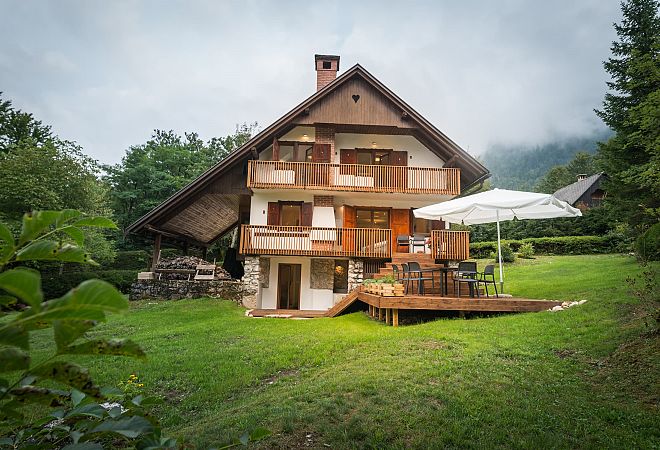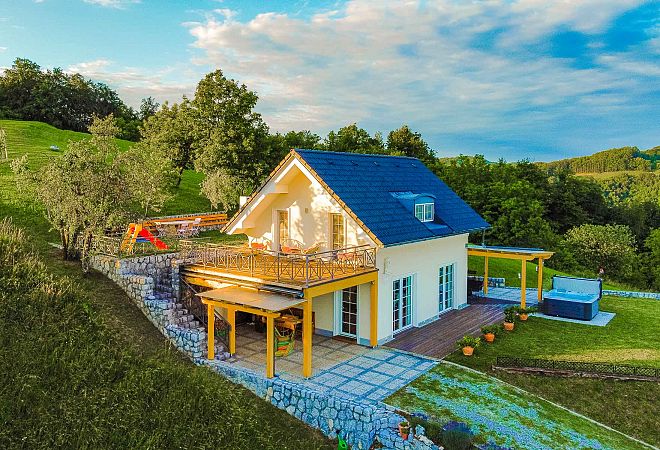The following contains facts and figures on the People, Geography, Economy and Government of Slovenia (with thanks to the CIA World Factbook).
A Brief History
The Slovene lands were part of the Austro-Hungarian Empire until the latter's dissolution at the end of World War I. In 1918, the Slovenes joined the Serbs and Croats in forming a new multinational state, which was named Yugoslavia in 1929. After World War II, Slovenia became a republic of the renewed Yugoslavia, which though Communist, distanced itself from Moscow's rule. Dissatisfied with the exercise of power by the majority Serbs, the Slovenes succeeded in establishing their independence in 1991 after a short 10-day war. Historical ties to Western Europe, a strong economy, and a stable democracy have assisted in Slovenia's transformation to a modern state. Slovenia acceded to both NATO and the EU in the spring of 2004; it joined the eurozone in 2007.
It is also the smallest non-island state having a single and unique official language.
Area
Total: 20,273 km2
Size rank in comparison to the world: 154th
Land: 20,151 km2
Water: 122 km2
Boundaries and Borders
Total borders: 1,370 km
Border countries: Austria 318 km, Croatia 670 km, Hungary 102 km, Italy 280 km
Coastline: 46.6 km
Climate & Terrain
Mediterranean climate on the coast, continental climate with mild to hot summers and cold winters in the plateaus and valleys to the east. Short coastal strip on the Adriatic, an alpine mountain region adjacent to Italy and Austria, mixed mountains and valleys with numerous rivers to the east.
Slovenia Natural Resources & Land Use
Information on Slovenian Natural Resouces: ignite coal, lead, zinc, building stone, hydropower, forests.
Arable Land: 8.53 %
Permanent Crops: 1.43 %
Other: 90.04 % (2005)
Slovenian People & Population Information
Population: 2,119,675 (1st of April 2023)
Population rank in comparison to the world: 149
Age structure:
- 0 -14 years: 15.1%
- 15 -64 years: 63.8%
- 65 years and over: 21.1% (2023 est.)
Median age: total: 44.5 years (2023 est.)
Birth rate: 9.00 births / 1,000 population (2022 est.)
population (2022 est.)
Population growth rate: 0.13% (2023 est.)
Death rate: 11 deaths / 1,000 population (2023 est.)
Net migration rate: 1.2 migrant(s) / 1,000 population (2023 est.)
Urban population: 50 % of total population (2023)
Rate of urbanization: 0.2 % annual rate of change (2010-15 est.)
Life expectancy information in Slovenia:
- Total population: 80.66 years
- Country rank comparison to the world: 61
- Male: 77.63 years
- Female: 83.69 years (2022 est.)
Ethnic groups: Slovene 83.1%, Serb 2%, Croat 1.8%, Bosniak 1.1%, other or unspecified 12% (2002 census)
Religions: Catholic 57.8%, Muslim 2.4%, Orthodox 2.3%, other Christian 0.9%, unaffiliated 3.5%, other or unspecified 23%, none 10.1% (2002 census)
Language: Slovenian 91.1%, Serbo-Croatian 4.5%, other or unspecified 4.4% (2002 census)
Literacy: 99.7 %
Coordinates and Time Zone
Geographic coordinates: 46 03 N, 14 31 E
Time difference: GMT+1
Daylight saving time: +1hr, begins last Sunday in March; ends last Sunday in October
Government
Government Type: Parliamentary democracy
Head of state: President Nataša Pirc Musar (since 23 December 2023)
Head of government: Prime Minister Robert Golob (since 1st of June 2022)
Cabinet: Council of Ministers nominated by the prime minister and elected by the National Assembly
Elections: President elected by popular vote for a five-year term (eligible for a second term);
Economic Overview
Slovenia became the first 2004 European Union entrant to adopt the euro (on 1 January 2007) and has experienced one of the most stable political and economic transitions in Central and Southeastern Europe. With the highest per capita GDP in Central Europe, Slovenia has excellent infrastructure, a well-educated work force, and a strategic location between the Balkans and Western Europe. Privatization has lagged since 2002, and the economy has one of highest levels of state control in the EU. Structural reforms to improve the business environment have allowed for somewhat greater foreign participation in Slovenia's economy and helped to lower unemployment. In March 2004, Slovenia became the first transition country to graduate from borrower status to donor partner at the World Bank. In 2007, Slovenia was invited to begin the process for joining the OECD; it became a member in 2012. Despite its economic success, foreign direct investment (FDI) in Slovenia has lagged behind the region average, and taxes remain relatively high. Furthermore, the labor market is often seen as inflexible, and legacy industries are losing sales to more competitive firms in China, India, and elsewhere. In 2009, the global recession caused the economy to contract - through falling exports and industrial production - by 8%, and unemployment to rise. Although growth resumed in 2010, it dipped into negative territory in 2012 and the unemployment rate continued to rise, exceeding 12% in 2012.
GDP
$65.00 billion (2023 est.)
Country rank comparison to the world: 88

GDP Growth:
- 5,4% (2022 est.)
- 8,2% (2021 est.)
GDP per capita:
- $24,755 (2021 est.)
- country comparison to the world: 54
Agriculture: 1.8%
Industry: 32.2%
Services: 65,9% (2022 est.)
Other Economic Data
Unemployment rate:
- 4,5% (2021 est.)
- Country comparison to the world: 126
- 9,7% (2014 est.)

Public debt:
- 69.9% of GDP (2022 est.)
- Country comparison to the world: 71
Inflation:
- 10.5% (2023 est.)
- Country comparison to the world: 74
Slovenia Information: Industry & Agriculture
Agricultural products: potatoes, hops, wheat, sugar beets, corn, grapes, cattle, sheep, poultry
Industries: ferrous metallurgy and aluminum products, lead and zinc smelting; electronics (including military electronics), trucks, automobiles, electric power equipment, wood products, textiles, chemicals, machine tools
Imports and Exports
Exports:
- $52.9 billion (2022 est.)
- Country comparison to the world: 66
Export commodities:
- Manufactured goods, machinery and transport equipment, chemicals, food
Export partners:
- Germany 19.1%, Italy 10.6%, Austria 8%, Croatia 6.8%, Slovakia 4.7%, Hungary 4.4%, France 4.2% (2015)
Imports:
- $56.8 billion (2022 est.)
- Country comparison to the world: 66
Import commodities:
- Machinery and transport equipment, manufactured goods, chemicals, fuels and lubricants, food
Import partners:
- Germany 16.5%, Italy 13.6%, Austria 10.2%, China 5.5%, Croatia 5.1%, Turkey 4% (2015)
Insurance
For all your insurance needs we recommend GENERALI zavarovalnica d.d.



